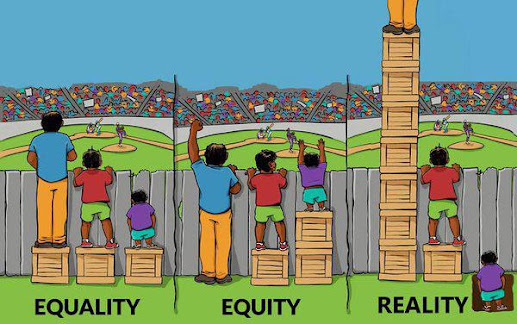Residents in Ferguson were shaping a network infrastructure both online and offline that generated awareness and local small-scale protests in towns and cities across the country which eventually vaulted Black Lives Matter to the national spotlight after the death of George Floyd. It needed time to develop as a network before it could result in social action and change.
We’ve all heard of the Oprah Winfrey effect where books skyrocket to best sellers based on Oprah's recommendations. But the research shows the influencer isn’t enough: it’s existing book club networks that enable the success to take off. One individual’s voice is insufficient.
Social and technological innovations require credibility and credibility within the network. The more social approval that happens the more people in the network are excited to adopt. Social reinforcement in the geometry of networks is the key ingredient. As such, a centralized network (the fireworks) is much less powerful than one which is distributed network (fishing nets). While a centralized network can spread information faster, like a virus, a distributed network that is bound to be slower and have redundancy, is actually going to result in a much stronger message.
Weakness of weak ties – People in a centralized network have very few if any common contacts. It’s like a firework that requires a central node but has little else beyond that. In contrast to conventional network science often highlights the utility of weak ties, the reality is that it’s quite the opposite. Rather, a fishing-net pattern fosters the most trust and intimacy – strong ties networks - friends, families, close contacts. It’s quite a counter to the 6 degrees of separation that we’re so used to hearing about.
Snowball effect – Instead of targeting “influential people,” tipping points happen when places within networks are targeted. Social movements require time to incubate and to grow a critical mass. Social reinforcement spills over from one social cluster to another. “Early adopters” snowballs into a social movement that can tip the social norms for an entire community. As Damon Centola puts it,
“Social innovation” comes from social networks that balance coordination with creativity.Now if we were to extend this metaphor of networks to how libraries traditionally operate, we can probably find some lessons here. Libraries are notorious for defaulting to a centralized network, partly due to the nature of their hierarchical and organizational traditions. Libraries have for the most part been crystallized in the past. Publications such as Knowledge Justice have explored how historical white supremacy has been passed down in the practices, services, curriculum, spaces, and policies with the result that the LIS field continues to be invested in the false idea of its own objectivity and neutrality. When a profession is unable to diverse workforce is one that attracts people of different cultural backgrounds, ages, genders, disabilities, religions, sexual backgrounds, etc. it risks lacking diversity of not only people but new ideas and different approaches to thinking. This is nothing new as a species' ability to adapt and survive depends on diversity.
I’m heartened that change has begun to happen at the grassroots level. Change in LIS must happen at a distributed network level for it to be sustainable. Quick fixes in the language of job advertisements or meeting a quota of token hirings aren’t effective. Rather, racialized and minority organizations such as APALA, CALA, REFORMA, ViMLoC (just to name a few) are effective in creating professional networks, mentorship programs, and ultimately an infrastructure for meaningful change. And yes. It will take a village.














